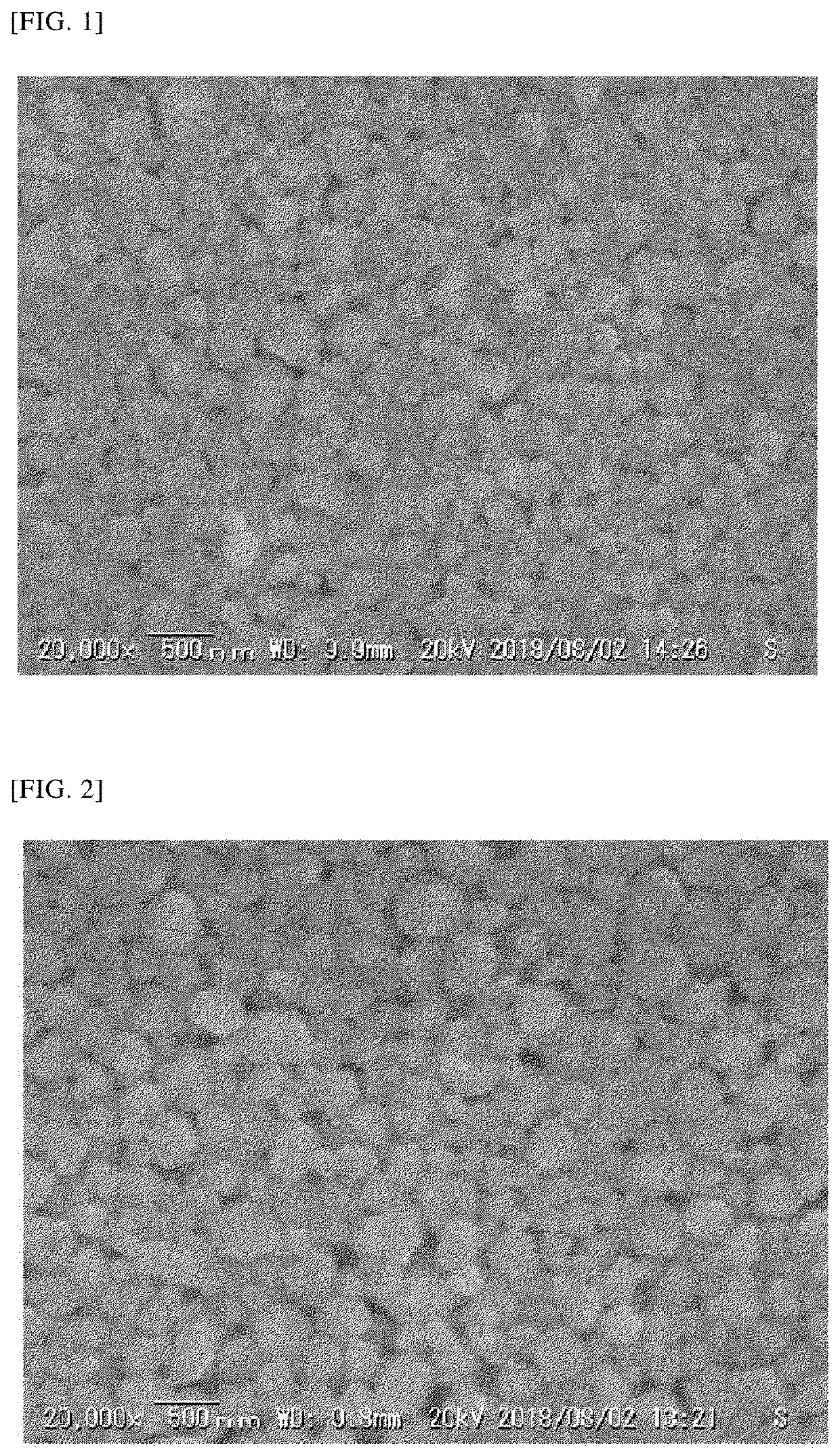Silver nanoparticles
- Summary
- Abstract
- Description
- Claims
- Application Information
AI Technical Summary
Benefits of technology
Problems solved by technology
Method used
Image
Examples
example 1
[0085]In 50-mL glass centrifuge tubes with a magnetic stirring bar, N,N-diethyl-1,3-diaminopropane (1.72 g), 2-(2-aminoethoxy)ethanol (1.39 g), and butanol (6.0 g) were placed and stirred for about 1 minute, and then silver oxalate (4.0 g) was placed and stirred for about 10 minutes to obtain a silver nanoparticle-preparation composition. Thereafter, these glass centrifuge tubes were set upright on a hot stirrer equipped with an aluminum block (HHE-19G-U available from Koike Precision Instruments), and stirred for 30 minutes at 40° C. and additionally for 30 minutes at 90° C. After being left to cool, the magnetic stirring bar was removed, 15 g of methanol was added to the composition and stirred with a vortex mixer, the composition was then subjected to centrifugation at 3000 rpm (about 1600×G) for 1 minute using a centrifuge (CF7D2 available from Hitachi Koki Co., Ltd.), and the supernatant was removed by tilting the centrifuge tubes. The process of adding 15 g of methanol, stirri...
example 2
[0088]In 50-mL glass centrifuge tubes with a magnetic stirring bar, 2-(2-aminoethoxy)ethanol (2.91 g) and butanol (6.0 g) were placed and stirred for about 1 minute, and then silver oxalate (4.0 g) was placed and stirred for about 10 minutes to obtain a silver nanoparticle-preparation composition. Thereafter, these glass centrifuge tubes were set upright on a hot stirrer equipped with an aluminum block (HHE-19G-U available from Koike Precision Instruments), and stirred for 30 minutes at 40° C. and additionally for 30 minutes at 90° C. After being left to cool, the magnetic stirring bar was removed, 15 g of methanol was added to the composition and stirred with a vortex mixer, the composition was then subjected to centrifugation at 3000 rpm (about 1600×G) for 1 minute using a centrifuge (CF7D2 available from Hitachi Koki Co., Ltd.), and the supernatant was removed by tilting the centrifuge tubes. The process of adding 15 g of methanol, stirring, centrifugation, and removing the super...
PUM
| Property | Measurement | Unit |
|---|---|---|
| Temperature | aaaaa | aaaaa |
| Temperature | aaaaa | aaaaa |
| Temperature | aaaaa | aaaaa |
Abstract
Description
Claims
Application Information
 Login to View More
Login to View More - R&D
- Intellectual Property
- Life Sciences
- Materials
- Tech Scout
- Unparalleled Data Quality
- Higher Quality Content
- 60% Fewer Hallucinations
Browse by: Latest US Patents, China's latest patents, Technical Efficacy Thesaurus, Application Domain, Technology Topic, Popular Technical Reports.
© 2025 PatSnap. All rights reserved.Legal|Privacy policy|Modern Slavery Act Transparency Statement|Sitemap|About US| Contact US: help@patsnap.com


